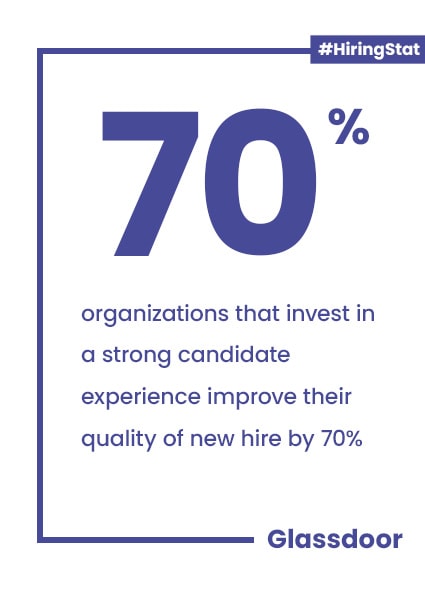What is candidate engagement?
At its core, candidate engagement is communication. It’s every bit of communication a person receives whether they are actively interested in a job opening or identified as a prospective candidate for future openings. Either way, talent engagement often starts with long before a prospective employee fills out their first job application with your company.
Engaging with candidates involves continual communication, networking, and on-going effort to create and maintain a viable talent pool. A talent engagement system provides effective and timely communications that brings your messaging to potential candidates and introduces them to your brand as an employer.
Strategies for engaging with the best candidates in your talent pool
 An effective candidate engagement system involves communication across multiple channels to break through the clutter, set yourself apart from the competition, and reach desirable candidates.
An effective candidate engagement system involves communication across multiple channels to break through the clutter, set yourself apart from the competition, and reach desirable candidates.
Communication is about setting expectations. Be sure your candidate engagement system communicates details of your company’s hiring practices, approximate timing, how and when their application is moved to the next stage, and when they can expect to hear back from you. Most importantly, keep your promises and stick to your timeline. A talent engagement system is used to let candidates know they are valued and that you appreciate their time.
Steps for Building Better Engagement
The goal a candidate engagement system is to deliver your employment message. Engaging with your talent pool in a way that communicates your company mission, vision, and values so that prospective candidates see themselves working happily and successfully in the role you want to fill.
There are two types of metrics that recruiters can use to track and improve their candidate engagement. The first is conversion metrics, and the second is success metrics.
Your conversion metrics include any data gathered throughout a candidate’s journey from prospect to potential hire. For the most part, these data points are gathered through tracking tools and applications that automatically source the data once a potential candidate shows interest in an open position.
While thousands of data points can be tracked and reported on, many employers find it best to track the following conversion metrics when scoring their candidate engagement:
1. Application Completion Ratio:
The ratio of completed applications vs. those that were started indicates whether the job posting and process for completing the application kept potential candidates engaged.
When evaluating this ratio, it is important to review the information presented in the job description and the reasonable time it takes an internal team member to complete the application.
2. Source of Hire:
Understanding the sources through which candidates discover opportunities to work with your company is crucial for optimizing your candidate engagement.
Employers can determine which channels are most effective when building their engagement strategy by tracking these different sources, such as career websites, job boards, social channels, referrals, or direct sourcing.
3. Content Engagement:
What happened after a candidate showed interest in an open position? Did they visit your website? Did they read one of your company’s press releases? Did they go searching for reviews of your company on different ranking sites?
By understanding these different responses and how it affects candidate engagement, any company can take steps to guide top candidates to the resources that lead to a positive outcome.
4. Time to Hire:
Depending on the position, the time to hire may be longer or shorter. By taking the time to track and set an approved hiring time frame, recruiters and build in personal or automated touchpoints into the recruitment process to keep top candidates engaged.
Having a longer hiring process is okay, but candidates are less likely to stay positive during a long process if there is poor communication.
5. Stage-Specific Conversion Rates:
Stage-specific conversions refer to those that continue to the next phase of a company’s recruitment process. This can include those selected for additional background screenings, interviews with key team members, or the final stage of a job offer.
To properly track these conversion rates, it is important to track the number of candidates selected to move forward and include the why. Why was a candidate selected vs. not? Why was a specific candidate hired over another?
While your conversion metrics deal with hiring process information, success metrics are all about results. These metrics include:
1. Feedback Surveys:
Asking a candidate for feedback is not only a direct method for understanding where your candidate engagement strategy may fall short, but it can also help build trust with your employer brand.
2. Offer Acceptance Ratio:
Of the candidate or candidates selected for the position, how many of them accepted the offer? A clear indicator of issues that may exist in your candidate engagement process is why a job offer is declined.
3. Job Tenure:
According to a study by the Society for Human Resources Management (SHRM). A great candidate experience ensures that 69% of employees stay with a company for three years. A candidate’s tenure with any position helps indicate areas of improvement.